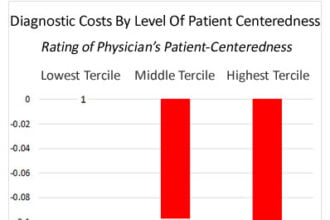 A breast biopsy is a common procedure often performed after a mammogram reveals evidence of abnormal hyperplasia (increased cell production).
A breast biopsy is a common procedure often performed after a mammogram reveals evidence of abnormal hyperplasia (increased cell production).
 A breast biopsy is a common procedure often performed after a mammogram reveals evidence of abnormal hyperplasia (increased cell production). Now a new study finds two types of breast tissue abnormalities have the same potential to progress to breast cancer, which is contrary to the existing understanding. The scientists responsible for this investigation suggest the care and management of patients with breast tissue abnormalities might be improved based on the results of their study. “We work in the area of atypical hyperplasia because it is the most important pre malignant lesion in the breast,” Dr. Lynn C. Hartmann, professor of oncology at the Mayo Clinic, toldMedical Daily in an email. “And we are interested in bringing forward optimal means of screening and reducing risk in women who have atypia.” Hartmann is co-author of the new study published in Cancer Prevention Research.
A breast biopsy is a common procedure often performed after a mammogram reveals evidence of abnormal hyperplasia (increased cell production). Now a new study finds two types of breast tissue abnormalities have the same potential to progress to breast cancer, which is contrary to the existing understanding. The scientists responsible for this investigation suggest the care and management of patients with breast tissue abnormalities might be improved based on the results of their study. “We work in the area of atypical hyperplasia because it is the most important pre malignant lesion in the breast,” Dr. Lynn C. Hartmann, professor of oncology at the Mayo Clinic, toldMedical Daily in an email. “And we are interested in bringing forward optimal means of screening and reducing risk in women who have atypia.” Hartmann is co-author of the new study published in Cancer Prevention Research.
Mammogram Abnormalities
A mammogram, which is an x-ray picture of the breast, is commonly used to screen for breast cancer in women over the age of 40 because they can detect tumors as well as abnormal cell growth that cannot be felt during self-examination. One breast tissue abnormality frequently spotted during a mammogram is atypical ductal hyperplasia (ADH), which is generally considered to be a direct precursor to a low-grade invasive ductal cancer. Atypical lobular hyperplasia (ALH) is another frequent discovery, but ALH is generally thought to be only a risk indicator and not a sign of impending breast cancer.
Although both these types of atypical cell growth are not fully understood, the current recommendations followed by many doctors include surgically removing any ADH lesions found in the breast, while allowing most ALH lesions to remain. The current study, then, is all about testing these guidelines: Are they accurate? Having previously investigated atypical hyperplasia in 331 women diagnosed at the Mayo Clinic from 1967 to 1991, Hartmann and a team of scientists decided to extend the follow-up period through 2001 and in this way come to better understand both ductal and lobular atypical hyperplasia. The current study, then, tracks 698 women for an average of 12.5 years after their mammograms detected atypical cell growth.
ADH versus ALH
Among the 698 women in the Mayo Benign Breast Disease Cohort who had atypical cell growth, the research team identified 330 women with ADH, 327 with ALH, and 32 with both. Of these women, 143 of them eventually developed breast cancer during the extended follow-up period of the study. The first result of the study was unsurprising: The ratio of breast cancer in the same breast in which the unusual cell growth was detected versus in the opposite breast was the same, 2:1, for both ADH and ALH.
Unexpectedly, though, the researchers found a similar number of women with either ADH or ALH had developed breast cancer in the same breast within five years of diagnosis; contrary to the current understanding, then, ALH may be a precursor in addition to being a risk indicator for cancer. Similar to ADH, the study data showed, ALH predominantly resulted in ductal cancer of the breast and both ADH and ALH resulted in invasive ductal cancers, of which 69 percent were intermediate or high grade cancers. “We showed that even though the two types of atypia look different histologically, they behave quite similarly in terms of what happens to patients,” said Hartmann, who also told Medical Daily she chose to work in breast cancer because it is “a major health problem in women.”
Even more, this final result directly conflicts with previous expert opinions that suggest women with atypia develop “better risk” or low-grade cancers with a good prognosis. In fact, the pattern of cancers found in these patients did not differ from those seen in the general population. “If a woman has a breast biopsy and if it shows atypia, it might be wise for her to be seen at a breast center for recommendations about surveillance and preventive therapy options,” Hartmann stated. “We hope these data will further help clinicians make informed decisions for breast atypia management strategies.” Going forward, Hartmann and her team will continue to advance their research in the area of breast tissue abnormalities. “We are pursuing a number of molecular studies in atypia samples from women who progressed to breast cancer, vs those who did not, to answer these biological questions,” she told Medical Daily.
Source: Hartmann LC, Radisky DC, Frost MH, et al. Understanding the Premalignant Potential of Atypical Hyperplasia through Its Natural History: A Longitudinal Cohort Study. Cancer Prevention Research. 2014.
(mammogram / shutterstock)





